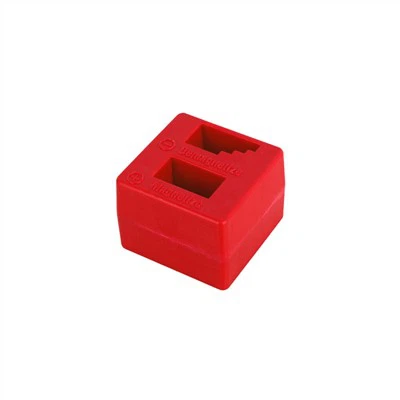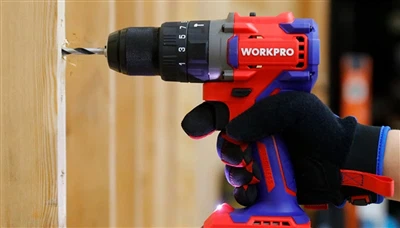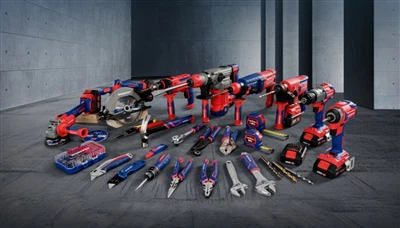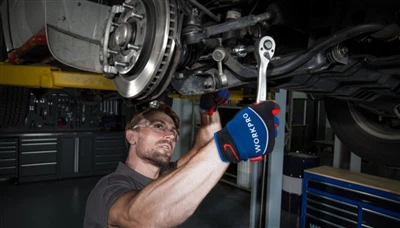In both professional and industrial settings, as well as in domestic settings, drills are the instruments that are utilised and utilised the most. The use of a drill allows you to create holes of varying diameters in a variety of various levels, including those in cement, metal, and wooden surfaces, among other things.
Through the addition of accessories, a drill can be utilised for a variety of tasks, including sanding, opening and closing screws, polishing, and even cutting. On the other hand, before you begin working with any tool, you need to be familiar with the operation of that instrument or device, particularly the precautions that should be taken when using that item. You can both maintain your health and extend the life of your device if you have a certain amount of expertise in the field of safety and how to deal with drills. Your familiarity with the fundamentals of working with a drill is demonstrated by the fact that you have ever used a drill in the course of a project or at home. That being said, the following are some suggestions for working with drills that will help you maintain both your own health and the health of your machine.

1.Choose the Right Kind of Drill
The selection of the appropriate drill and drill bits, both in terms of size and kind, is the initial stage in the process of drilling successfully. The WORKPRO tools brand can supply you with a wide range of drills, such as electric corded drills, corded impact drills, corded impact wrenches, and many others.
2.Remember to wear protective clothing and safety workwear at all times.
Wearing safety goggles is a requirement for safe drilling at all times. Additionally, respiratory masks are required to prevent inhaling the dust that is produced by drilling. Additionally, gloves are quite useful instruments, and they might be of use to you if they are precisely the same size as your hand. To ensure that your hands are protected from harm, it is important to select gloves that are the appropriate size.
3.Check to see that the Drill Chuck is sufficiently tightened.
It is important to check that the drill is securely and smoothly operating in the chuck before beginning the drilling process. However, if the chuck is not properly secured, the drill bit will not turn. To begin the process of tightening the chuck in a drill, the drill bit must first be inserted into the existing chuck. Next, make sure that the drill chuck is tightened until it clicks a few times. After that, turn the chuck in the opposite direction until you hear and feel a single buzzing sound. When the last click is heard, it indicates that the drill bit has been locked into its position in a satisfactory manner.
4.Make your workpiece more secure.
In order to prevent any movement in your workpiece, you should first use a clamp to tighten it before beginning the drilling process. If you want to maintain control of the drill, you should never grip the piece with your hand, and you should always use both hands to hold the drill.
5.Be sure not to exert an excessive amount of force on the drill.
A significant portion of the drilling job ought to be carried out by the motor itself. You run the risk of damaging the engine or causing the drill to slip if you apply an excessive amount of pressure. As a result, it is essential to make adjustments to the speed of your drill as well as the amount of pressure that you use, both of which are determined by the material that you are dealing with. For instance, when working with wood, you can use high speed and pressure to create holes that are rough in appearance. But if you exert a lot of force, you might increase the likelihood of tearing out. To lessen the likelihood of the bit splintering out of the wood when you begin drilling a hole in it, you should attempt to go a little bit slower and keep the bit as straight as you can.
6.During the drilling process, you should avoid wearing jewellery and loose clothing.
When working with drills, it is risky to wear jewellery, a scarf, and clothing with long sleeves that are loosely fitting. The motion of a drill has the potential to grab and pull the things that are hanging, which could result in a potentially hazardous situation. When you are drilling, you should make sure that your hair is pulled back if it is long and that your sleeves are rolled up if they are long and loose.
7.Mark the location of the drilling
To prevent the drill from slipping on surfaces such as metal, glass, and other similar materials, it is recommended to first hit the work area with a nail and mark it. Afterward, use a more compact drill to create a hole. It is then necessary to use the primary drill bit to create a hole. You will find that drilling straight and clean is much simpler as a result of this. In order to keep the drill from sliding while you are working on the tile, you can also adhere a piece of paper to the point that you are aiming for.
8.When water drops onto the drill, make sure you turn it off.
In the event that water gets on your electric corded drill, you should first disconnect it and then dry it using a Ronix heat gun or a standard dryer. This will help you minimise the possibility of receiving an electric shock or your tool catching fire. In the event that you are utilising a cordless drill driver that is rechargeable, you should remove the battery and allow the equipment to dry. Undoubtedly, WORKPRO can supply you with Waterproof Cordless Drills that are able to provide resistance to water.

9.Begin with a Drill Base
Additionally, the drill base serves as a frame and a guide. When you wish to drill a hard surface, you can make use of a drill base with your drill. You will find that a drill base is of great assistance to you in situations where straight drilling is difficult.
10.A corded drill should not be held or hung from its cable in any way.
It is imperative that you never touch or carry a corded drill while it is suspended from its cable. Doing so may result in the breakage of the wire and possibly even a short circuit.











